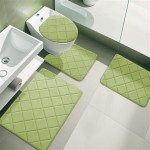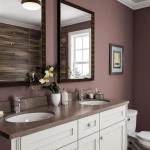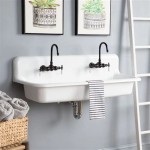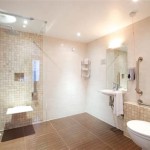Granite Bathroom Countertops With Sink: A Comprehensive Overview
Granite bathroom countertops with sink are a popular choice for homeowners seeking a durable, aesthetically pleasing, and relatively low-maintenance surface. This combination offers a blend of natural beauty and practicality, making it a suitable option for both new constructions and renovation projects. The following article explores the characteristics, advantages, disadvantages, installation considerations, and maintenance requirements of granite bathroom countertops with integrated or separately installed sinks.
Granite, an igneous rock formed deep within the Earth, is composed primarily of quartz, feldspar, and mica. Its formation process, characterized by slow cooling and crystallization under intense pressure, results in a dense, hard material with unique grain patterns and color variations. Each granite slab is unique, meaning that no two countertops will be exactly alike. These variations are considered a significant advantage by many homeowners, as they contribute to the countertop's individual character and appeal.
The sink, whether integrated or a separate element, plays a crucial role in the functionality and aesthetics of the bathroom countertop. Undermount, drop-in, and vessel sinks are common choices, each offering distinct visual and practical characteristics. The selection of the sink style and material should complement the granite countertop and the overall bathroom design.
Durability and Longevity
Granite is renowned for its durability. Its high density and hardness make it resistant to scratches, chips, and heat. This is particularly advantageous in a bathroom setting, where countertops are frequently exposed to water, soap, cosmetics, and styling tools. A properly sealed granite countertop can withstand daily use for many years with minimal wear and tear.
The resistance to heat is another significant benefit. Hot styling tools, such as hair straighteners and curling irons, can be placed directly on the granite surface without causing damage, provided the countertop is properly sealed and maintained. This eliminates the need for trivets or other protective measures, contributing to convenience and ease of use.
Furthermore, granite's inherent resistance to water and staining, especially when sealed, contributes to its longevity. The sealant creates a barrier that prevents liquids from penetrating the porous surface, reducing the risk of staining and bacterial growth. Regular resealing, typically every one to two years, is essential to maintain this protective layer.
However, while granite is durable, it is not indestructible. High impacts from heavy objects can potentially chip or crack the surface. It is therefore important to handle heavy items with care and avoid dropping them onto the countertop. Additionally, while granite is heat resistant, prolonged exposure to very high temperatures may eventually cause damage. It is advisable to avoid leaving hot items on the surface for extended periods.
Aesthetic Appeal and Design Versatility
The natural beauty of granite is a key factor driving its popularity as a countertop material. The wide range of colors, patterns, and textures available ensures that homeowners can find a slab that complements their bathroom's design scheme. From light and airy whites and creams to dark and dramatic blacks and browns, granite offers a diverse palette of options.
The unique veining and mineral deposits within each granite slab create a one-of-a-kind appearance. These natural variations add depth and character to the countertop, making it a focal point in the bathroom. The edges of the granite can be customized with different profiles, such as bullnose, ogee, or bevel, to further enhance its aesthetic appeal.
Granite countertops with sink can be seamlessly integrated into various bathroom styles, from traditional to contemporary. In a traditional bathroom, a granite countertop with a detailed edge profile and a classic undermount sink can create a timeless and elegant look. In a modern bathroom, a sleek granite countertop with a minimalist edge profile and a vessel sink can contribute to a clean and sophisticated aesthetic.
The sink selection further enhances the design versatility of granite countertops. Undermount sinks create a seamless transition between the countertop and the sink basin, making cleaning easy and maximizing countertop space. Drop-in sinks are a more traditional option that can be easier to install and replace. Vessel sinks, which sit on top of the countertop, provide a unique and eye-catching design element.
Installation and Maintenance Considerations
The installation of granite bathroom countertops with sink is a complex process that requires specialized knowledge and equipment. It is generally recommended to hire a professional installer to ensure that the countertop is properly measured, cut, and installed. Incorrect installation can lead to cracks, leaks, and other problems.
The installation process typically involves the following steps: measuring the bathroom space, selecting the granite slab, cutting the slab to the appropriate size, fabricating the sink cutout, polishing the edges, and installing the countertop with appropriate adhesives and sealants. The sink plumbing must also be properly connected to ensure that the sink functions correctly.
Once installed, granite countertops require regular maintenance to preserve their beauty and durability. Daily cleaning with a mild soap and water solution is generally sufficient to remove dirt and grime. Abrasive cleaners should be avoided, as they can scratch the surface of the granite.
As previously mentioned, sealing the granite countertop is essential to protect it from stains and water damage. The frequency of resealing depends on the type of sealant used and the level of use the countertop receives. A simple water test can be used to determine if resealing is necessary. If water beads up on the surface, the sealant is still effective. If the water is absorbed into the granite, it is time to reseal.
In addition to regular cleaning and sealing, it is important to avoid exposing the granite countertop to harsh chemicals or extreme temperatures. Avoid using acidic cleaners, such as vinegar or lemon juice, as they can etch the surface of the granite. Similarly, avoid placing hot pots or pans directly on the countertop for extended periods of time.
Addressing stains promptly is crucial to prevent them from becoming permanent. Different types of stains require different cleaning methods. For example, oil-based stains can often be removed with a poultice made of baking soda and water. Water-based stains can often be removed with a poultice made of hydrogen peroxide and water. It is always recommended to test any cleaning solution in an inconspicuous area before applying it to the entire countertop.
The choice of sink and its installation method also impacts the overall maintenance of the countertop. Undermount sinks require careful sealing to prevent water from seeping between the sink and the countertop. Drop-in sinks may require periodic caulking to maintain a watertight seal. Vessel sinks, while aesthetically pleasing, may require more frequent cleaning around the base to prevent the buildup of soap scum and grime.
The cost of granite bathroom countertops with sink can vary depending on several factors, including the type of granite, the size of the countertop, the edge profile, the sink selection, and the cost of installation. Granite is generally considered a mid-range to high-end countertop material. While it may be more expensive than some other options, such as laminate or solid surface, its durability and aesthetic appeal make it a worthwhile investment for many homeowners.
The longevity of a granite countertop, coupled with its resistance to staining and heat, contributes to its long-term value. The initial investment in a granite countertop can be offset by its ability to withstand years of daily use without significant wear and tear. This reduces the need for frequent repairs or replacements, making it a cost-effective option in the long run.
Environmental Considerations
The environmental impact of granite countertops is a topic of increasing concern. Granite is a natural resource that is extracted from quarries. The quarrying process can have significant environmental consequences, including habitat destruction, soil erosion, and water pollution. The transportation of granite slabs from the quarry to the fabrication facility and then to the installation site also contributes to carbon emissions.
However, granite is also a durable and long-lasting material, which can reduce the need for frequent replacements. Its resistance to staining and heat can minimize the use of harsh cleaning chemicals. Furthermore, granite can be recycled or repurposed at the end of its life cycle, further reducing its environmental impact.
Consumers can mitigate the environmental impact of granite countertops by choosing responsibly sourced granite. Look for granite that is certified by reputable organizations that promote sustainable quarrying practices. Additionally, consider purchasing granite from local quarries to reduce transportation emissions. Proper maintenance of the countertop can also extend its lifespan and reduce the need for replacement.

Cost Of Granite Countertops Type Style Square Foot Modernize

Granite Vs Quartz A Bathroom Countertop Comparison
:strip_icc()/102227038-7f5a5ef7c99948bd817d94db91e36084.jpg?strip=all)
18 Luxurious Bathroom Countertop Ideas For All Budgets

Granite Bathroom Design Ideas Best Designs In 2024 Marble Com

Mix And Match The Perfect Stone Countertop To Complement Your Must Have Vessel Sink

5 Best Bathroom Vanity Countertop Options

Granite Bathroom Images Browse 87 969 Stock Photos Vectors And Adobe

Beautiful Bathroom Countertop Designs For A Luxurious Look Homes

Bathroom Granite Countertop Costs

Granite Bathroom Countertops C D Minneapolis







